If you look at the backswing of golf professionals, you’ll soon notice a lot of variation. Each player has their own way of executing it. That being said, the best of the best rarely break the fundamentals of the backswing — that’s why they are at the top!
Here are 12 tips you can implement today to improve your golf backswing:
- A Firm Grip and Correct Placement
- Backswing Should be Slower than Downswing
- Straight Front Arm (Mostly)
- Bent Rear Arm
- Full Shoulder Rotation
- Transfer Weight to the Rear Leg
- Lead Heel Stays on the Ground
- Rear Leg Is Slightly Bent
- Front Knee Points Toward the Ball
- Rotate Hips
- Keep Hips and Head Centrally Aligned
Today we are going to cover golf backswing faults and fixes, detailing the correct form for the various parts of the body. We find that knowing what not to do as well as the correct form is very helpful, as it will highlight if you’re currently committing any backswing sins!
What Is a Golf Backswing?
The backswing is the entire build-up portion of your golf swing. It begins as soon as you withdraw your club and ends when you accelerate your club forward.
You may hear the term “takeaway” as this is the first segment of the backswing. It ends when your club becomes parallel to the ground.
The Components of a Golf Swing
Before we get into the golf backswing tips, it’s first important to highlight where exactly the backswing fits in with your golf swing. The steps are as follows
- Address
- Backswing
- Transition
- Downswing
- Contact
- Follow-through
As you can see the backswing is the second stage of your golf swing and the first point where movement occurs. As such, if you get it wrong, it can have a serious knock-on domino effect and ruin the successive stages of your golf swing.
Tips for a Perfect Backswing
1. A Firm Grip and Correct Placement
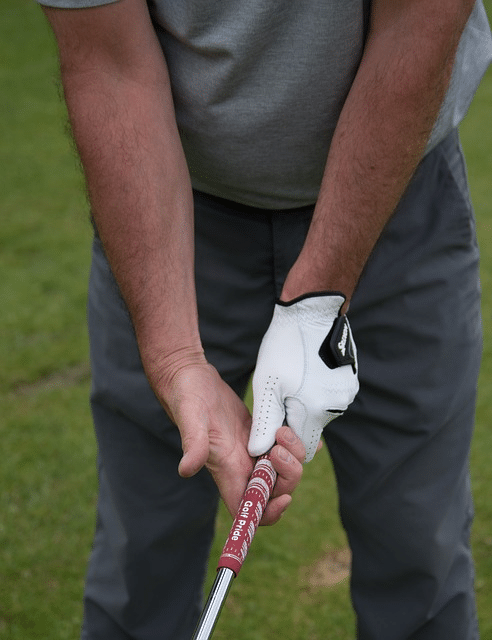
The key to having a quality grip is to hold your club firm, but not overly tight.
You should also focus on holding the club mostly with your fingers rather than your palms. This gives you greater flexibility allowing you to produce a more pronounced wrist hinge for your golf backswing, and thus more power.
Also, pay attention to the placement of your hands. Grip the club so that your palms are facing one another, you shouldn’t turn them too far to the left or right. The latter is usually evidence that you are trying to swing your club too hard.
2. Backswing Should be Slower than Downswing
The whole premise of having a fast backswing is that it translates to a faster downswing. Your backswing should never be faster than your downswing — the speed surplus is serving no benefit if it does not translate to pace when you strike the ball.
What’s more, if you’re backswing is too fast you’ll rush elements of your stroke. Finding that your lower body doesn’t have enough time to turn? Your downswing is too fast. Give yourself enough time to complete every technical step of the downswing.
3. Straight Front Arm (Mostly)
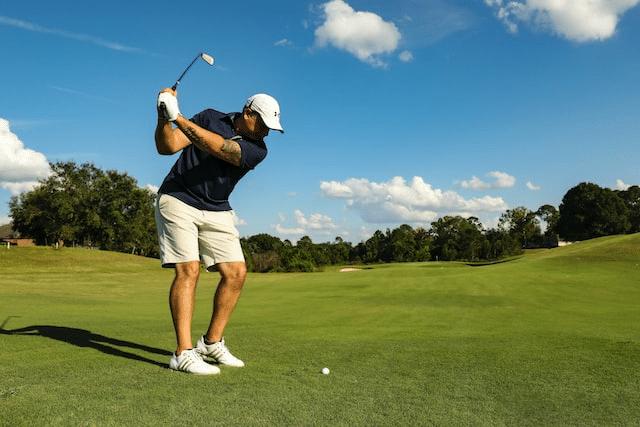
A key portion of a proper golf backswing that many amateurs get wrong is the position of the front arm. You should try and keep it as straight as possible throughout the entire backswing, a slight bend is fine, but no more than around 6 degrees.
Players commonly overbend their elbow at the apex of their backswing to try and create a longer swing in the hope of increasing speed. However, this causes problems so you should avoid doing it.
So remember, try and keep your arm fairly straight and focus on a seamless movement with no tension.
4. Bent Rear Arm
The golf backswing for the right elbow (rear) is quite different from the lead elbow. This is because it increasingly bends throughout the golf backswing sequence.
Take note of your arm positions at address. They form a triangle with your torso. The principle is to try and maintain this triangle throughout the backswing. The way you do this is by increasing your bend at the elbow until you reach the end of your backswing. At this point, your right elbow should have around a 90-degree bend, perhaps more.
If you want to learn more about the correct right arm position for your golf swing, give this post a read.
5. Full Shoulder Rotation
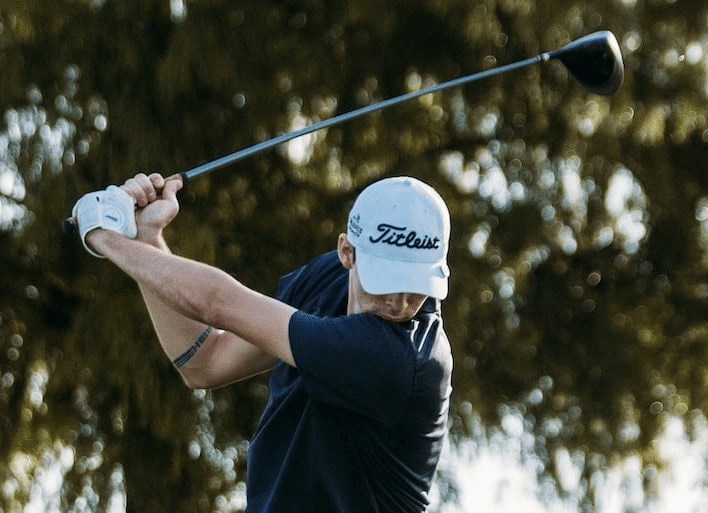
Under rotation of the shoulders is a fairly common issue, but fortunately, it’s easy to correct. All you need to do is compare the position of your right shoulder at address and your left shoulder at the end of your backswing. Both shoulder positions should be the same. So if your left shoulder isn’t going quite back far enough, try twisting a little more otherwise you’ll lose power.
Tiger Woods actually makes a point of rotating his shoulder more than his hips. This speaks to the importance of proper shoulder rotation.
6. Transfer Weight to the Rear Leg
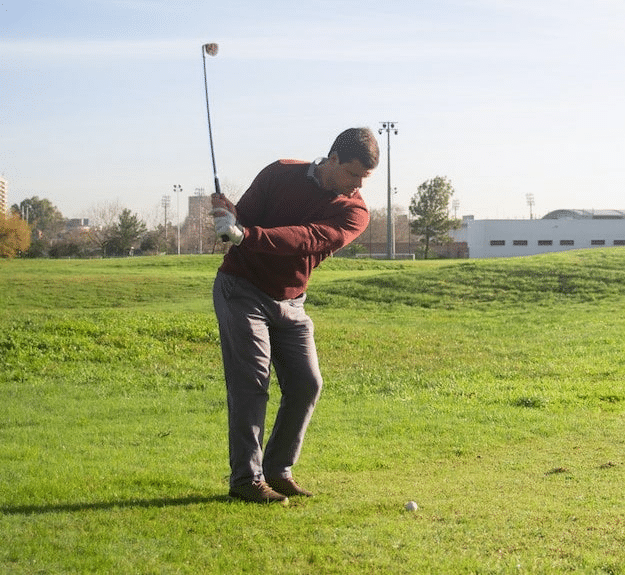
To build potential energy during your golf backswing it is essential to transfer some of your weight from your lead leg to your rear leg. This will help with your balance and ensure that you strike the ball with more power.
Some players are guilty of doing the opposite of this motion which is called the reverse pivot error. They shift their weight incorrectly to their lead foot — it’s usually the result of a poor setup. This often causes the ball to veer off to the right.
7. Lead Heel Stays on the Ground
For most players, your lead heel should stay firmly planted on the ground throughout your backswing. While it’s true the likes of Jack Nicklaus raises his lead heel for his backswing, he’s one of the best golfers of all time. So you shouldn’t mirror his style unless you are very talented.
The reason players lift their heel, just as when they bend their lead arm, is to produce a wider arc on their swing in the hopes of faster swing speed.
Read more: How To Stop Lifting Up Your Downswing
8. Rear Leg Is Slightly Bent
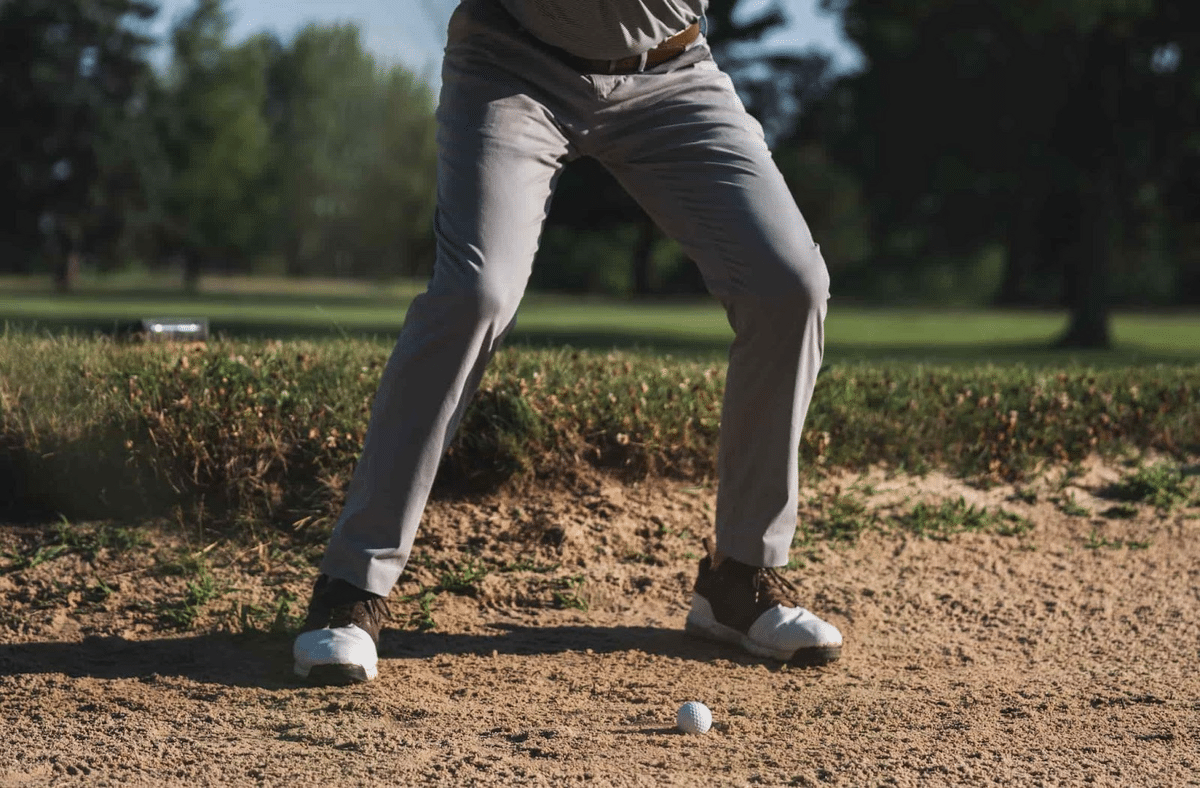
You should aim to have a slight bend in your rear leg which is comparable to that of your lead leg. If you straighten your rear leg during the backswing at all, you’ll find that your hips turn slower on the downswing movement leading to slower pace.
Moreover, this mistake may cause you to overswing and fade or slice the ball due to decreased precision. So keep the rear leg slightly bent as it will optimize swing speed and accuracy.
9. Front Knee Points Toward the Ball
Now that we’ve established that your weight gets transferred to your rear leg and that your front heel stays on the ground, all that’s left to do in your legs is to point your lead leg correctly.
And the process is very simple. As your weight transfers to your rear leg, your left leg won’t be inclined to move laterally. It should stay idle as it was at address, pointing towards or slightly in front of the ball.
If you find your front knee pointing behind the ball, your form needs touching up. This is one of the reasons why your lead heel should stay on the ground. The additional rotation it promotes tends to cause your knee to move too far back.
10. Rotate Hips
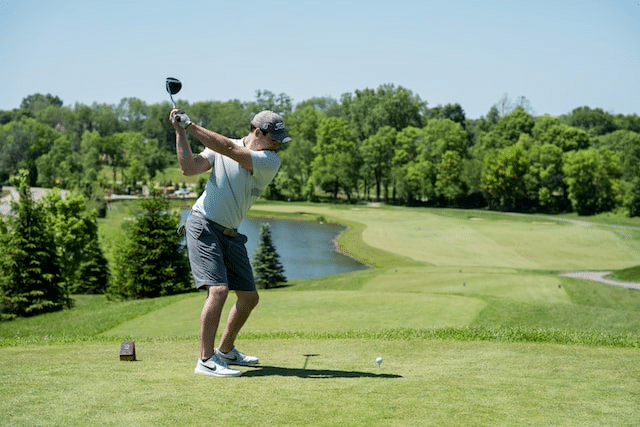
Hips are a fundamental component of your golf backswing and where much of your power comes from. If you fail to engage your hips properly you’ll produce an “all-arms swing” which is significantly less powerful and accurate.
Your hips rotate at a steady rate throughout your entire backswing, kicking in just after your arms begin the motion. There’s no phase with increased rotation. The movement should be seamless.
11. Keep Hips and Head Centrally Aligned
Not keeping your body centrally aligned is an easy mistake to make. This is because failing to properly execute any of the prior tips can cause your torso and head to move out of alignment.
You need to be centrally aligned otherwise your swing will suffer. For instance, if your spine angles to the right you’ll struggle to hit down on the ball.
The golden rule is to keep your hips and head in the middle as the rest of the body will follow. Just focus on these two areas as it should help.
So when you transfer your weight to your back leg, focus on allowing your rotation of the hips to do the work rather than moving your hips backward.
As for your head, imagine that you have locked it in place with your torso. Try to keep it stationary both horizontally and vertically. If it moves on either plane your spine has moved which indicates you’ve made a mistake.
Read More: How to Shallow Golf Swing and Strike the Ball Cleaner
FAQs
What Is the Most Common Mistake in the Backswing?
The most common mistake is a weak grip where you position the hands too far to the left. This results in the clubface being more open at impact causing too much elevation and not enough distance.
What Is the Most Important Part of the Backswing?
According to Jack Nicklaus, the most important part of the backswing is the takeaway — the first portion of your backswing until your club becomes parallel to the ground.
He believes that you should be slow and very precise, withdrawing your club straight back from the ball. If you go inside or outside, your swing will feel awkward and you’ll struggle to execute the various elements of your swing correctly.
Many people experience this mistake with their iron backswing. During the golf takeaway, they open up the clubface too much which results in a loss of distance. You can help correct this by engaging your hips earlier on in the motion.
Should My Backswing Be Fast or Slow?
Your golf backswing should be as fast as you can manage. A faster backswing often results in a faster downswing which will give you good distance. However, if you go too fast your form will break down which will result in you losing distance. As such, you must find the right speed for you.
Do the Arms Move First in the Backswing?
The arms should always move first in the backswing. This is because you want to get your club in motion as quickly as possible to build up speed. What’s more, the club head has further to travel in the backswing than your body, so it needs a little head start before you begin to rotate your hips.
Closing Thoughts
The importance of the golf backswing cannot be overstated, and unfortunately, a lot of people make mistakes here. After all, it’s pretty tough to get right!
However, if you break down the backswing into its component it’s easier to understand where you might be going wrong and how to fix your mistakes.
For further reading, our basic step-by-step guide on how to swing a club might interest you. We also have another post on our best golf swing tips. Each tip has detailed photos so they are very easy to understand.
Alex’s routes in sports began with football and now mostly focuses on ping pong and golf. Alex loves the strategy and is always looking for a competitive edge. This is what drove him to write strategy guides and product reviews. He takes great pride in spreading his knowledge and loves to coach fellow players. You can connect with him on LinkedIn, IG, FB, or alexhorscroftwriting@gmail.com.






